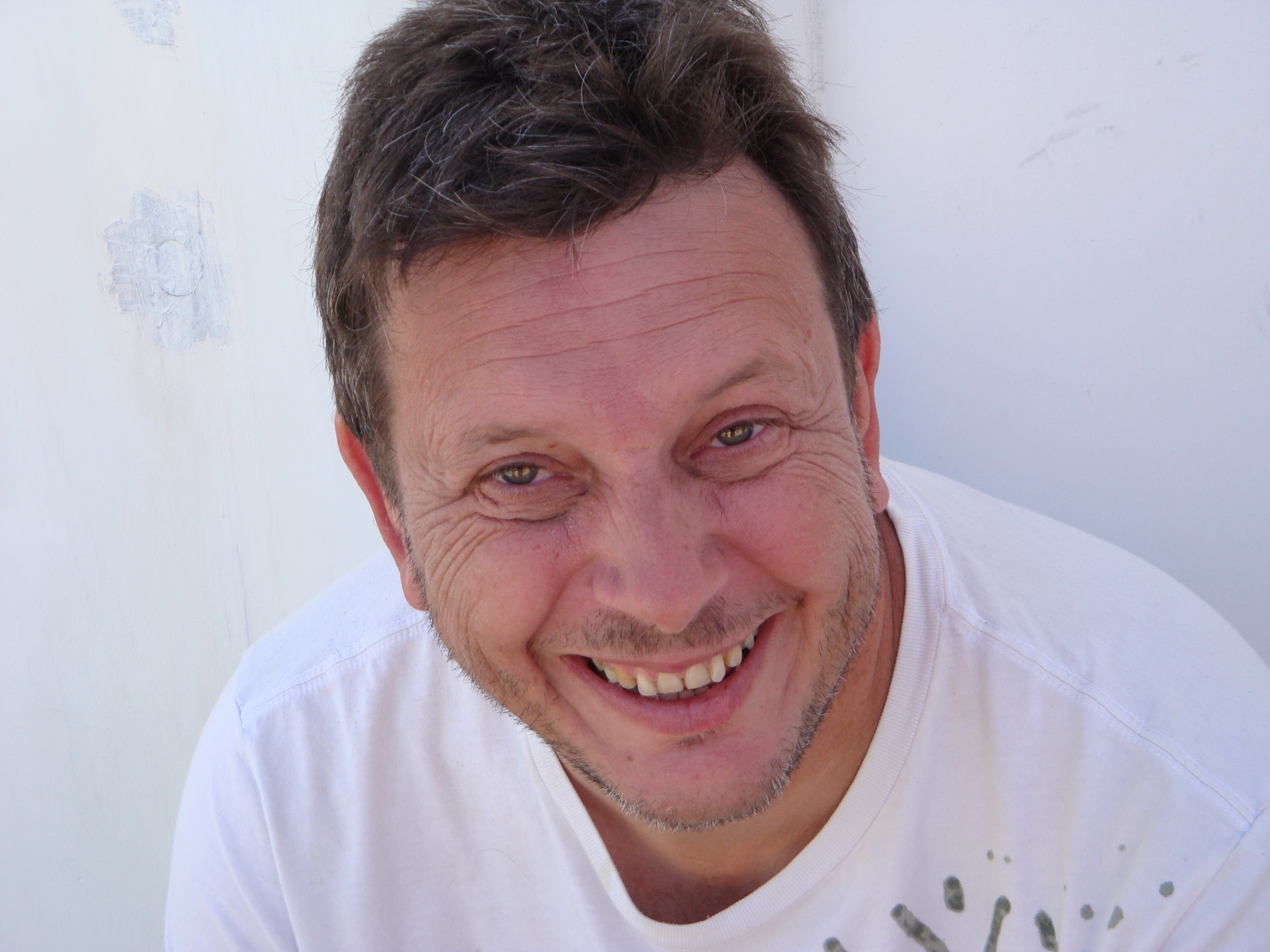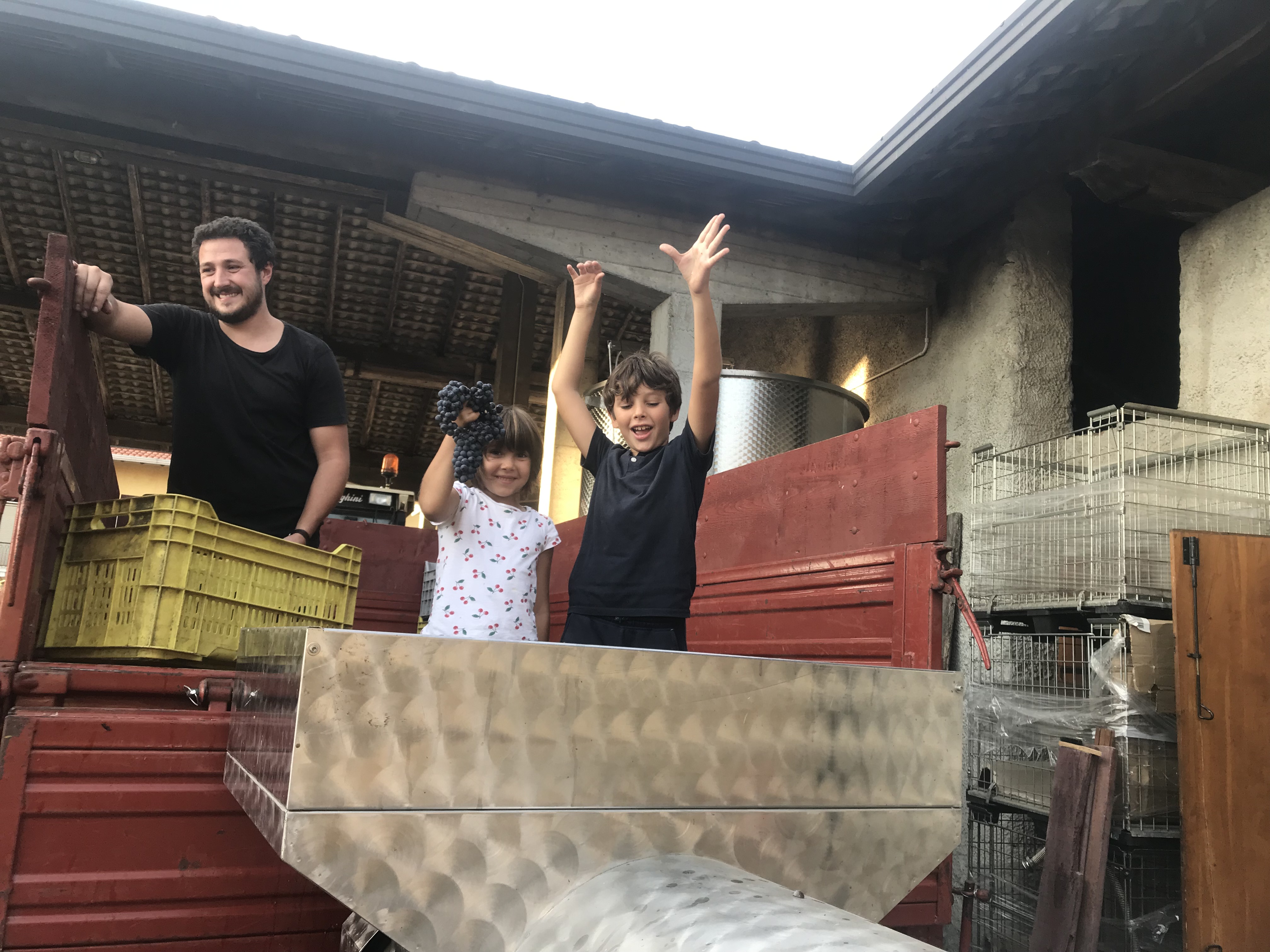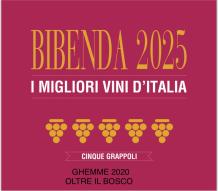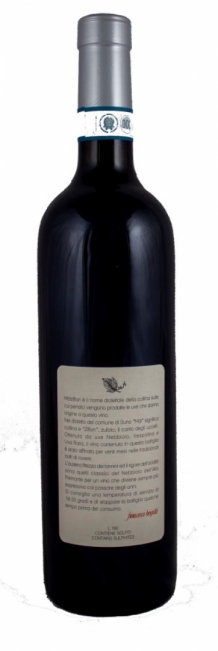Francesco Brigatti
The history of Brigatti's estate began in the early 1900s when Alessandro Brigatti, Francesco's grandfather, began planting some vines to supplement the cultivation of grain.

The great passion for wine was what drove Alessandro to look for a suitable piece of land to plant his own vineyard. During his search, he came across a gently sloping hillside, exposed to the south and with clay-rich soil.
"Love at first sight, it was! He certainly had a keen eye, as that spot is one of the best hills in the area, also known as MötZiflon.
From tending the vines to the winemaking process, they began making artisanal wines to the highest standards.
In such an idyllic spot, Alessandro began cultivating Nebbiolo, Vespolina and Uva Rara, undeniably the three most representative red grape varieties of the Colline Novaresi, the hills in the province of Novara where these grapes are blended together to make Mötziflon, the wine named after the vineyard.
At that time, Mötziflon was sold in neighboring towns and transported in small wooden barrels with a capacity of seven "brente" ("Brenta" is an ancient unit of measurement equivalent to 50 liters).
And thus was born the Mötziflon, Brigatti's flagship to date, whose name literally means "Robin Hill."
Driven by a strong passion for winemaking, Luciano, Alessandro's son, comes to the helm of the estate in the late 1950s. He gave up his job as an accountant and invested every penny in the vineyard and winery.
From there, he expanded the vineyards, changed vine management systems and introduced the innovative practice of green harvesting to select grapes and increase quality. Luciano also developed wine aging and bottling techniques.
Since 1995, the Brigatti estate has been run by Francesco, Luciano's son, with degrees in oenology and agronomy. He has chosen to stick strictly to a family business in order to maintain high quality standards.
Today Francesco Brigatti owns 15 hectares of vineyard on which he applies Integrated Pest Management criteria as an important part of his vision of sustainable agriculture.
Today the total annual production is 30,000 bottles
Francesco Brigatti's cellar compartment is divided into three environments:
- the oldest building where we placed the cement vats used for the long maceration on the skins of our Nebbiolo.
- a more recently built area partially designed to house the bottling machine and to store the wines during their final refinement in bottle.
- a cellar dedicated to several oak barrels used for aging red grape wines. The space is six meters below ground level to keep both temperature and humidity stable throughout the year. Depending on the style of wine he wants to achieve, he uses either Slavonian oak barrels with a capacity of 3,000 liters, smaller French oak barrels with a capacity of 1,500 liters or tonneaux.
The vineyards are maintained according to the strict criteria of Integrated Pest Management, which means that every operation must be driven by the utmost respect for the environment: the lawn is kept under control by mowing it only mechanically and by completely eliminating the use of chemicals.
Pruning is done in accordance with local regulations that imply Guyot as the traditional training system.
In particular, they act so that:
- 7 or 8 buds for Barbera, Uva Rara and Vespolina vines
- 8 or 9 buds per branch for Nebbiolo vine
- 9 or 10 buds per branch for our white grape
This approach ensures that he stays well below the production limits imposed by the procedural guidelines of the specific D.O.C. (Denominations of Controlled Origin) for each variety.

All grapes are harvested manually in small crates to keep the bunches in pristine conditions during transport to the estate for processing.
The vineyards extend over three distinct hills, also called möt in our local dialect: the MötZiflon, the Mötfrei and the Campazzi, all different due to their location and soil composition.
The Mötziflon faces southwest and has a predominantly clay content.
The Mötfrei has a southern exposure with red sandy loam soil.
The Campazzi is more west-facing and is on looser soil because it contains a higher percentage of sand. (Note: we do not import the Campazzi Barbera into Belgium)
6 Items









